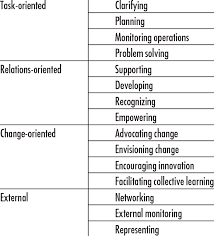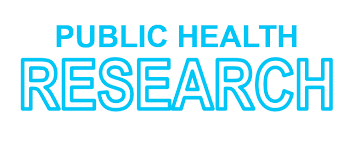
Qualitative Critique
Order Instructions:
Hear below are some additional information and resources to help for this assignment . It is critical that the writer properly respond to all questions in the template as clearly indicated YES and No responses are not all welcome and the writer must verify that all responses are accurate , and also she must attached the article use for the analysis together with the completed assignment . the article cannot be more than 5 years old and must be from the U.S or Canada . The Pdf file should be attached together with the completed paper. Use the resources below to help understand what is suppose to be done , the is no room for mistakes for this paper , and it is Due MONDAY JULY 28, 2014.
ANALYSIS OF RESEARCH DATA
Analyzing Qualitative Data
In qualitative studies, data are analyzed by reviewing the textual data and coding it based on patterns and themes. This is a time-consuming process and explains why the sample size of qualitative studies is considerably less than in quantitative studies. Every word must be read multiple times to determine patterns. These patterns are pulled out and listed as FINDINGS.
Activities
REQUIRED ACTIVITIES
From your textbooks, read:
Introduction to Nursing Research Incorporating Evidence-Based Practice
Chapter 12
Chapter 13
Please retrieve and read the following journal articles
Jacelon, C., & O’Dell, K. (2005). Demystifying nursing research. Analyzing qualitative data. Urologic Nursing, 25(3), 217–220.
Rothwell, E. (2010). Analyzing focus group data: content and interaction. Journal For Specialists In Pediatric Nursing, 15(2), 176–180.
Ryan, F., Coughlan, M., & Cronin, P. (2007). Step-by-step guide to critiquing research. Part 2: qualitative research. British Journal Of Nursing (BJN), 16(12), 738–744.
Smith, J., & Firth, J. (2011). Qualitative data analysis: the framework approach. Nurse Researcher, 18(2), 52–62.
Please review the following websites.
Analyzing Qualitative Data
How To Analyze Qualitative Data. Retrieved from
http://toolkit.pellinstitute.org/evaluation-guide/analyze/analyze-qualitative-data/
Tips for Analyzing Qualitative Data. Retrieved from
http://www.insites.org/CLIP_v1_site/-downloads/PDFs/TipsAnalzQualData.5D.8-07.pdf
Software Programs for Analyzing
- Data QSR© Retrieved from
http://www.qsrinternational.com/ - ETHNOGRAPH™ Retrieved from
http://www.qualisresearch.com/ - AnSWR™ Retrieved from
http://www.cdc.gov/hiv/topics/surveillance-/resources/software/answr/index.htm - ELAN© Retrieved from
http://www.lat-mpi.eu/tools/tools/elan - QUALRUS™ Retrieved from
http://www.ideaworks.com/qualrus/index.html
SAMPLE ANSWER
Qualitative Critique
Please use the below Qualitative Critique Completion Form to complete your critique of quantitative research. Type in your responses under EACH section. If your opinion is that the research article does not address or infer an answer to a particular section, then you must so state and JUSTIFY your statement.
IMPORTANT:
- Do not leave any section blank!
- Do not provide a “yes” or “no” answer without an You must justify all your responses.
- ALL responses must be written in YOUR OWN WORDS. Do NOT use quotes.
- You must submit the full article in PDF form. Critiques submitted without the PDF will not be accepted.
STUDENT NAME
Full and Complete Reference for the Article
Note: You must submit the full article in PDF form. Critiques submitted without the PDF will not be accepted.
Problem
What is the problem the study was conducted to address?
The study aimed as assessing the reasons why registered nurses left the nursing field immediately after starting their nursing practice.
Why is the problem an important one for nursing to study?
The challenge is vital since the nursing study required amendments that should be implemented with perfection and exact accuracy. This study will assist in addressing any issues that negatively influence the nursing industry.
Study Purpose
What is the purpose of the study?
The study aimed at identifying the factors that influence the registered nurses’ decision to quit the clinical nursing profession immediately after joining.
Research Questions
What are the research question(s)?
- What is the meaning of bedside nursing?
- How is the role of the clinical or bedside nurse defined?
- What is the relationship that exists between the RN and her patient?
- What are the reasons or situations that contribute to the RNs’ decision to quit bedside nursing?
- What situations exemplify the relationship between co-workers when offering direct patient care?
- Do RNs find career fulfillment after changing from the nursing practice?
- What conditions do RNs state if they were to return to the clinical nursing practice?
- What reasons made the participate RNs to participate in the study?
Are the questions stated broadly enough for a qualitative study? Explain WHY.
The questions are inadequate and are not 100% fit for the qualitative study. There is a need for more clarification so as to ensure that the respondents are exact. For instance, no questions address the issue of leaving the nursing field (Holloway & Wheeler, 2013).
Study Design
What specific qualitative method is used?
The phenomenological research design was used to offer an in-depth comprehension of the decisions to quit the clinical practice. The interpretive hermeneutic method would give meaning to experience.
Provide a clear description of the qualitative method utilized (utilize your text or another source to do this – provide citation)
When using this method, the data is obtained through the use of in-depth, personal, unstructured, or semi-structured interviews. The interview sessions are long and the researcher may need to have several sessions with a participant (Watzlawik & Born, 2007). Since there is a heavy reliance on interviews as the data collection method, the researcher should have good interviewing skills. For analysis purposes, the interviews are tape-recorded. The participants have real life experiences, are willing to participate, and can articulate conscious experiences. The participants range from 5- 25 and when using the phenomenological research approach, there is a focus on what is vital for the meaning of an interaction, episode, or event. The participants’ voice is sought. The problem can either be direct or indirect. A central, single question may guide the research. A number of sub questions orient researchers in gathering data as well as framing the results (Watzlawik & Born, 2007).
In what way is the method used an appropriate one for this study? Clearly justify your answer.
The method is proper since it is intensive and promotes double-checking of the gathered data’s accuracy. The method is the most explanatory and specific in research.
Philosophical/Theoretical Framework Basis for the Study (Determine from Literature – this does not refer to the methodology.)
Identify the philosophical/theoretical basis of the study.
This study’s basis is explaining why the practice of nursing experiences nurses shortage yet RNs are being recruited continuously in USA. There is a deficit of approximately half a million professionals and the turnover rate is still very high (Keele, 2010). The study aims at assessing the reasons for the high turnover. The study is founded on the belief that there is something amiss in the profession, and aims at identifying these challenges. This challenge is compounded by the fact that across th country, nursing schools are making immense efforts to expand capacity so as to meet the escalating demand for healthcare considering the national move towards healthcare reform. The AACN (American Association of Colleges of Nursing) is collaborating with the media, nursing organizations, policy makers, and schools to bring attention to the issue. AACN is leveraging its resources so as to shape legislation, form collaborations, and identify strategies for addressing the shortage. Apart from encouraging and recruiting more nurses into the profession, there is a need to address the challenges the current ones are facing.
Describe/discuss the references cited to support the philosophical or theoretical approach used.
The Bureau of Labor Statistics’ Employment Projections 2010- 2020 February that was released in 2012, the RNs workforce rates the highest in regard to job expansion through 2020. It is anticipated that the employed nurses’ number will increase from 2.7 million (2010) to 3.45 million (2020). This represents a 26% or 712,000 increase. These projections further indicate the need for approximately 495, 500 replacements in the workforce. As a result, the total job opening number for nurses due to replacements and growth will grow to 1.2 million (2020). The US Registered Nurse Workforce Report Card and Shortage Forecast that was published in 2012 January’s issue of the American Journal of Medical Quality, a RNs shortage is anticipated to spread across the nation between 2009- 2030. The authors predict in the state by state analysis that the most critical shortage will be experienced in the West and South.
Is the philosophical or theoretical basis of the study clearly linked with the study assumptions, data collection procedures and analytical and interpretative approach. How? If not, describe what is missing.
A majority of the philosophical study agrees with the study’s assumptions. For example, there are assumptions that the high turnover could be as a result of stress as well as sub-optimal working conditions. These are confirmed in the study at the end. The economic benefits’ assumption never came out clearly.
How is the framework related to the body of knowledge in nursing?
The framework elaborates a real challenge that has been ignored for sometime. It relates to the nursing’s body of knowledge in relation to the reasons for the high turnover. A higher percentage of the knowledge is really the actual reasons. The link is actual based on the fact that there is a relationship to the real occurrences in nursing. The qualitative study uses an interpretive narrative strategy and a constructive paradigm. Often, case studies have narratives approaching the contradictions and complexities of real life, and this is useful for describing, exploring, and comprehending a phenomenon. Investigating cases intensively offers contextual knowledge of real phenomena which would not be achieved if the population-based approach is being used. The case-centered research adds knowledge regarding how nurses construct novel career identities and experience career transitions.
Review of the Related Literature
Are the articles relevant with previous studies and theories described? Justify your response.
The articles are relevant based on the fact that there is an actual and acknowledged nursing shortage. The articles propose so. This is also confirmed by the theories and there are explanations why. RNs are leaving the profession although there is still a shortage. Statistics support the article’s proposition and theories.
Are the references current? What are the number of sources within past 10 years? What are the number of sources within past five years?
There are current references that are within the previous 10 years (3) and 5 years (2).
Describe the current knowledge about the research problem.
The current knowledge on nursing shortage predicts that US is anticipated to experience a sharp shortage with the increasing healthcare need and aging of the Baby Boomers. This challenge is compounded by the fact that nursing school in the nation are making efforts to escalate the capacity of meeting the increasing care demand considering the move towards healthcare reform. There is increased collaborations and more resources are dedicated towards addressing the issue. The use of the qualitative approach made explaining the turnover easier as a multidimensional and ongoing process where several factors lead to a final decision to quit the profession. The narrative career interviews constitute a feasible data collection method relating to career transition processes. In-depth narrative stories offer special real-life contextual knowledge related to nurses’ experiences amidst such career transitions (Watzlawik & Born, 2007).
Specify the gap in the literature that justifies the need for the research.
The reasons why RNs are quitting the nursing profession are unknown. Therefore, the study aimed at identifying these reasons. At the same time, over half a million nurses are needed although the few that are available are quitting.
Subjects and Setting
Describe the subjects and the setting.
The subjects were recruited through the use of a snowball technique. Presently practicing RNs at different hospitals in southeastern US were contacted by a primary researchers. They were asked if they were aware of nurses who had quit the profession. The study was described in an email and these nurses were asked to assist in recruiting potent participant. Every potential participant was contacted through the telephone before the interview so as to ensure that they meet the study criteria. All recruitments are made using the telephone. Recruitment was not limited to one hospital but efforts were made to contact any known RN who was not practicing and was willing to be part of the study. After the proposed study was described briefly, the researcher determined a proper location and convenient time to conduct the interview. The setting was proper for the interviewer and subject; the setting had to be agreed about. Email and phone calls communication were used first when creating the contact.
In what way is the method of obtaining subjects appropriate? Justify your answer.
It promotes the surety that subjects will be met and the most appropriate ones will be obtained. Since there was no known sample of nurses who had left the practice they were sought through referrals and there was guarantee they would be obtained. The interviewer and subjects create a rapport and can meet again if need be. Moreover, earlier information can clarified.
In what way is the size of the sample used adequate? Justify your answer.
The sample size was sufficient. It was non-probability sampling and identified the primary participants. The sample was based on the purpose and judgment of the research. All the time used was accounted for well. By the time the last 2 interviews were being reviewed, there was data saturation and this indicated the sample size was adequate.
In what way was the setting in which data were collected an appropriate one for this study? Why? Justify your answer.
The setting made noting the information to be gathered easy. Moreover, any mistakes made earlier could be rectified since there was an audiotaped record. The notes could be rectified and the audiotape could be re-listened for any clarifications.
Indicate the type of consent obtained and institutional review board approval.
The Institutional Review Board approval involved recruitment of study participants and it was from Georgia State University. The participants signed a written informed consent that guaranteed anonymity, voluntariliness, and interviews’ termination at any time.
In what way were the steps taken to protect the rights of subjects adequate?
The participants had a chance of meeting again with the researchers so as to clarify any vital information. As a result, the participants would not be quoted wrongly when writing the final draft. The participants’ consent to participate in the study was sought. They also received transcripts’ copies so that they would review them for accuracy (Hennink, Hutter & Bailey, 2010).
Data Collection Procedure and Appropriateness of Data Analysis Methods
Identify the data collection procedures used and provide a description of how the data was collected.
The data was gathered from a sample that was made up of ten participants. The participants had adequate time to react to the e-mails. In addition, there were phone calls for briefs before the face-to-face meeting was scheduled.
In what way were the data collection procedures used consistent with the purpose of the qualitative approach selected? Clearly justify your answer.
Consistency was maintained in that the pre-conditions that were for the participants were never changed. The participants were required to give proof that they were RNs. No procedures were changed and all the participants adhered to the same procedure. The number of participants was adequate and this gave adequate time for the entire process to take place (Watzlawik & Born, 2007).
Define data saturation.
Data saturation refers to the point at which the data collection process can stop. This is the point at which the researcher starts collecting repetitive information such that there are no new ideas being generated.
What evidence is there that data saturation was achieved? Describe fully.
The most common reason the participants gave for quitting the practice is unfriendly workplace. Many of the participants stated this reason. This was a saturated data since the last two interviews only repeated themes identified in the first six interviews.
Specific Data Analysis Procedures Used
Identify the qualitative data analysis procedures used to examine the data
The data analysis procedures utilized in examining are typology, taxonomy, constant comparison/ grounded theory, induction, logical/ matrix analysis, quasi-statistics/ quantitative, frame/ event analysis, and metaphorical analysis (Guest & McQueen, 2008).
Define the qualitative data analysis procedures used.
Typology refers to the creation of a classification system or list of categories that are mutually exclusive.
Taxonomy refers to a typology that has multiple concept levels.
Constant comparison/ grounded theory is coding of documents, axial/ core categories emerge, and categories saturate (Hennink, Hutter & Bailey, 2010).
Induction involves forming a hypothesis about an event and then comparing to similar events so as to verify/ modify/ falsify hypothesis. Eventually, the general or central hypothesis emerges.
Quasi-statistics or quantitative involves counting the number of events or mentionings. This mainly supports categories.
Frame/ event analysis identifies certain boundaries of events, and eventually, event phases.
Metaphorical analysis involves developing particular metaphors for an event. The participants are also asked for comparisons or spontaneous metaphors.
In what way(s) are the data analysis procedures appropriate for the data collected? Clearly justify your answer.
All these approaches are proper in giving a picture of reasoning regarding why the study is vital. For example, the typology process assists in determining the gender that was most affected. The quantitative procedure was useful in coming up with figures (numbers and percentages) of those who were affected by a certain issue of concern or reason. There were boundaries in the span of sample’s setting and size. This is a confirmation to the frame/ event analysis procedure. The data analysis procedures led to identification of themes and patterns until there was data saturation.
In what way(s) are the data analysis procedures consistent with the qualitative method used? Clearly justify your answer.
All the procedures are within the research question. The procedures target the reasons of the turnover, which brings in the aspect of RNs workplace quality and, therefore, the quantitative aspect. There is a focus on the why and how all that occurred, and to whom. With qualitative studies, analysis aims at identifying themes and patterns, which was clearly evident in the study.
Evidence of Auditability/Decision Trail/Member checks
Define decision trail.
This is a strategy allowing another researcher to use the same data and follow the original researcher’s logic. The decision trail results to an audit trail and this permits the replication of original findings after data reexamination.
Was a decision trail developed? Was it reported in sufficient detail? Clearly justify your answer.
In the first place, the researcher attributes three reasons to the turnover. Previous research identified economic benefits and the current research identifies two other reasons. The initial facts are from an initial research and this conforms to the decision trail. The trail is however not adequate since there is no mention of where the research was obtained from.
Specific Results Obtained
In YOUR OWN WORDS, what are the outcomes of the study? What did the study reveal? Provide a DETAILED response of at least ONE FULL PARAGRAPH as this is worth 8 points!
The study was extremely successful in discovering the reasons that led to the nurse turnover. The study identified three reasons that led to the exodus; emotional distress that was linked to patient care; exhaustion and fatigue; and emotional distress. The study also elaborates these reasons comprehensively. For example, the participants mention some of the reasons that led to the turnover as physical or verbal abuse from the co-workers, physicians, and managers; sexual harassment; and consistent support lack from other RNs. The nurses reported that emotional distress linked to patient care was identified when nurses reported the conflicts they felt in regard to patient care decisions, most particularly, ignoring the patients. Exhaustion and fatigue was characterized by the constant comments on overwhelming physical and emotional exhaustion (Hennink, Hutter & Bailey, 2010).
Strengths and Limitations
What are two major strengths of the scientific merit of this study? (This does NOT refer to outcomes of the study). Address credibility and confirmability.
The first strength is that the study is interpretive; all aspects that the researchers pose are interpreted in the study and there is a mention of their effect or benefit in the study field. facts are obtained and digested fully. Often, there are measures to oversee the collected fact’s effect. The study is also qualitative and exhaustive; the researcher does not stop at the data collection point but goes beyond to assess the participant again so as to ensure that they were sure of what they reported. In case of mistakes, the participant has a chance to rectify.
What are two major limitations of the scientific merit of this study?
The sample size is the first limitation; although the sample size may be exhausted fully, the sample’s magnitude does not represent all the RNs who have left the practice. The sample size of ten participants is not representative. The study consumes a lot of time; with every participant, arrangements to meet are made, followed by the meeting, and subsequent meetings for information verification. The exercise is expensive and long (Guest & McQueen, 2008).
To what extent are the study findings valid? Justify your answer.
The findings of the study are valid to the greater extent. The theories that were previously held are proved to a huge extent. The researchers’ and participants’ reasoning also prove the same thing. The ideas the researcher had are supported by the participants. This means that the challenge is real and if the flaws identified are rectified, then nursing shortage can be addressed.
Implications/Recommendations
How did the researcher generalize the findings? Where in nursing can the results be applied?
The researcher acknowledges the increasing medical technology requirements; increased patients’ acuity; and complicated nursing shortage phenomena, which call for the great need to retain the experienced bedside nursing staff. Medical surgical nurses can benefit greatly if they recognize that workplace perceptions greatly contribute to RNs quitting the practice (Guest & McQueen, 2008).
What did the researchers say the relevance of the data was? Describe the researchers’ interpretation of the findings.
The researcher recommends that exploring the study’s concepts in detail is very vital and can benefit each nurse, family, patient, and improve care’s quality. The data is relevant since it gave the actual reasons why nurses left the practice. The reasons that can nurses’ turnover mainly deal with the environment in which nurses practice. They can be addressed for better outcomes and the management should be keen on eliminating these flaws.
What suggestions for further study were identified?
Further suggestions are exploring the reasons why some RNs regard abuse to be acceptable in the clinical practice. The 2nd exploration is the power differentials among RNs, its connection to vertical indifference perceptions, and the ultimate effect in nursing intent or turnover.
Is the description of the study sufficiently clear for replication? Why or why not?
The description is adequate for replication since the participants were selected appropriately and offered valuable information.
REFLECTION
Reflect on your newly developed understanding of QUALITATIVE research. What has this experience meant to you? How will this make a difference in your practice of nursing? This is a personal reflection and should have some depth (at least two full paragraphs). Please respond in reference to understanding qualitative methodology and not the specific focus of the research study.
After reading and critiquing the qualitative research, I realized it was a clear and an effective way of acquiring information in the factual form. The sample should not necessarily be big so as to offer the clearest findings. The participants should be prepared for the research through the consent sought and the explanations done. The qualitative study offers broad conceptualizations regarding why things are the way they are. There is a great need to explore these concepts in detail since this will bring about immense benefits in the nursing practice. If the participants offer the wrong information, this can be addressed when clarifying the information they offered. This promotes accuracy and validity in qualitative research approaches.
The qualitative study experience gave an insight of the challenges that new nurses’ experience. In the nursing practice, there is a need to avoid the issues that the qualitative study revealed including conflicts, abuses, and negligence so as to promote the nursing practice and patient care. The qualitative approach is very useful when there is an intention to uncover real life situations. More research can be directed on the issues that are associated with nursing turnover using the qualitative approach so as to understand them better.
What has the experience of reading and critiquing a qualitative study meant to you? How will understanding and using qualitative research findings make a difference in your practice of nursing?
The experience was insightful and nice where reconfirming facts is vital even though theories may be favorable for the research.
How will understanding and using qualitative research findings make a difference in your practice of nursing?
The findings are quite encouraging since the issues revealed are real. However, they can be solved if the nursing practice is made more admirable and friendly. There is a need to explore these findings in detail so as to promote more positive impacts in the practice.
REFERENCES
Please list at least FIVE references (APA) used to inform your responses to the questions. Be sure you have properly cited the references with your answers.
Guest, G., & McQueen, K. (2008). Handbook for team-based qualitative research. New York: Cengage Learning.
Hennink, M., Hutter, I., & Bailey, A. (2010). Qualitative Research Methods. New York: SAGE.
Holloway, I., & Wheeler, S. (2013). Qualitative Research in Nursing and Healthcare. Boston: John Wiley & Sons.
Keele, R. (2010). Nursing Research and Evidence based practice. London: Jones & Bratlett.
Watzlawik, M., & Born, A. (2007). Capturing Identity: Quantitative and Qualitative Methods. Washington: University of America Press.
We can write this or a similar paper for you! Simply fill the order form!












